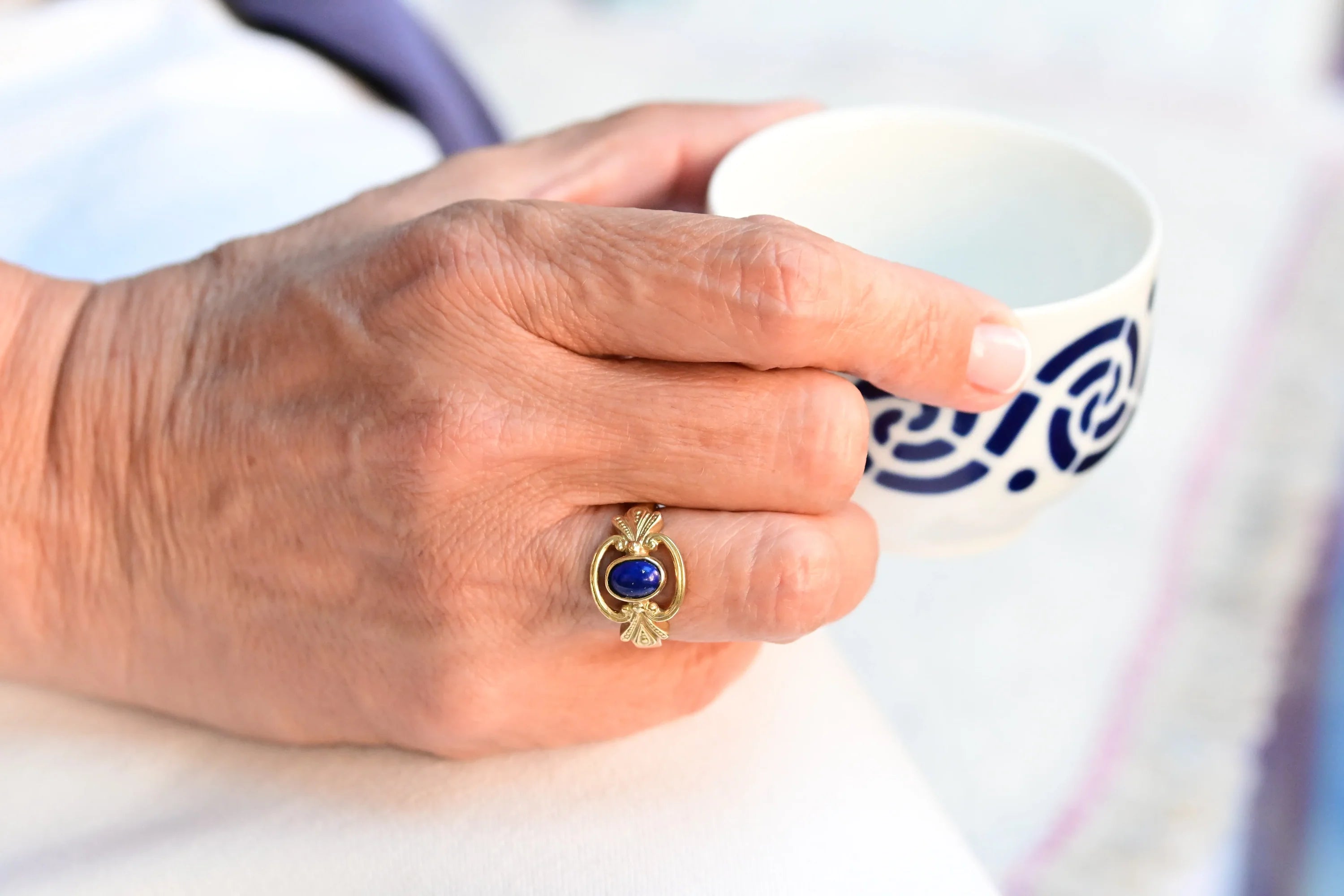Izbira med rumenim in belim zlatom je ključna odločitev v svetu vrhunskega nakita, saj ima vsak svojo edinstveno privlačnost in praktične lastnosti. V Moira Antique se specializiramo za poudarjanje brezčasne topline rumenega zlata in sodobne elegance belega zlata.
Naša skrbno izbrana kolekcija nakita je natančno oblikovana, da poudari značilnosti vsake kovine, kar zagotavlja, da vsak kos ne le izžareva eleganco, temveč tudi ustreza našim visokim standardom obdelave in vzdržljivosti.
V tem članku raziskujemo razlike med rumenim in belim zlatom, od njune sestave in barve do vzdržljivosti in zahtev glede vzdrževanja.
Ne glede na to, ali vas privlači klasični videz rumenega zlata ali sodobna prefinjenost belega zlata, vam razumevanje teh razlik omogoča izbiro, ki odraža vaš osebni slog in želje.

Razlike med rumenim in belim zlatom
Rumen zlato je najčistejša oblika zlata, ki se uporablja v nakitu, običajno zlit s kovinami, kot sta baker in cink, da se izboljša njegova vzdržljivost. Njegova značilna zlata barva je ikonična in skozi zgodovino cenjena zaradi svoje lepote in bogastva.
Belo zlato nastane z zlitjem čistega zlata z belimi kovinami, kot so paladij, srebro ali nikelj, in prevlečeno z rodijem, da dobi belo, odsevno sijajnost. Njegov videz spominja na platino, vendar po nižji ceni.
Primerjalna tabela
| Značilnost | Rumen zlato | Belo zlato |
|---|---|---|
| Barva | Toplo zlato | Svetlo belo |
| Vzdržljivost | Manj odporen na praske | Bolj odporen na praske |
| Vzdrževanje | Nizko | Visoko (potrebna rodijeva prevleka) |
| Stroški | Manj drago od belega zlata | Dražje od rumenega zlata |
| Slog | Klasičen in tradicionalen | Moderen in vsestranski |
| Alergijske reakcije | Manj verjetno povzroča alergije | Lahko povzroča alergije (nikelj) |
Rumen zlato
Prednosti
1- Klasičen in tradicionalen: Rumen zlato ima brezčasen videz, ki nikoli ne gre iz mode.
2- Hipoalergen: Zaradi čistosti manj verjetno povzroča alergijske reakcije.
3- Vzdrževanje: Zahteva manj vzdrževanja za ohranjanje barve in sijaja v primerjavi z belim zlatom.
Slabosti
1- Vzdržljivost: Lahko je mehkejše in bolj občutljivo na praske kot druge zlitine zlata.
2- Estetika: Ne ustreza vedno določenim odtenkom kože ali sodobnim slogom.

Belo zlato
Prednosti
1- Moderno in vsestransko: Njegov svetel videz je idealen za sodobne dizajne in se lepo dopolnjuje z diamanti ter drugimi dragulji.
2- Vzdržljivost: Bolj odporno na praske in obrabo kot rumeno zlato.
3- Stroški: Čeprav dražje od rumenega zlata, je še vedno ugodnejše od platine.
Slabosti
1- Vzdrževanje: Potrebno je redno prekrivanje z rodijem, da ohranja sijaj in barvo.
2- Alergijske reakcije: Nekateri posamezniki so lahko alergični na nikelj, prisoten v nekaterih zlitinah belega zlata.

Kako pridobimo rumeno zlato
Za pridobivanje 18-karatnega rumenega zlata se uporablja mešanica 75 % čistega zlata z drugimi kovinami, kot sta srebro in baker, v razmerju 25 %. Ta posebna zmes kovin znatno vpliva na končno barvo rumenega zlata, ki se giblje od intenzivnejših odtenkov do mehkejših tonov. Ta zlitina daje rumenemu zlatu značilen sijaj in vzdržljivost, kar ga naredi idealnega za nakit, ki želi izstopati z edinstveno svetlostjo.
Kako pridobimo belo zlato
Belo zlato se pridobiva z zlitjem 75 % čistega zlata z drugimi kovinami, kot sta paladij in srebro, ter včasih nikelj. Ta kombinacija ustvari zlitino, ki daje značilno belo barvo 18-karatnega belega zlata. Poleg zlitine je belo zlato pogosto prevlečeno z rodijem, da ga zaščiti pred zunanjimi vplivi in poveča njegov edinstven sijaj.

Zato izbira med rumenim in belim zlatom ni odvisna le od estetskih želja, temveč tudi od praktičnih dejavnikov, kot so vzdržljivost, vzdrževanje in skladnost z različnimi osebnimi slogi. Obe kovini ponujata bogato tradicijo in sodobno vsestranskost, ki ju naredi primerni za vsako priložnost in okus.
Raziskovanje možnosti rumenega in belega zlata je raziskovanje sveta brezčasne lepote in funkcionalnosti. Te plemenite kovine ne le dopolnjujejo široko paleto draguljev, temveč ponujajo tudi izjemno vzdržljivost in edinstveno sposobnost zajemanja svetlobe.
Ne glede na to, ali imate raje klasično toplino rumenega zlata ali sodobno eleganco belega zlata, v Moira Antique boste našli navdih in obrt, ki vaš nakit spremeni v kose, ki trajajo tako v času kot v osebnem slogu.
